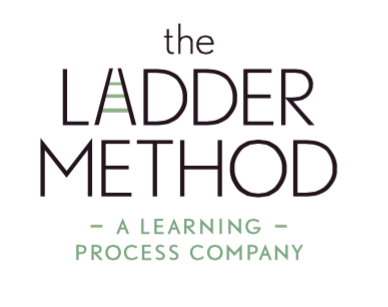The ERB vs ISEE: What is the Difference?
WHAT IS THE ISEE
The ISEE (Independent School Entrance Examination) is the most widely used private school entrance exam in the United States. Students applying to private schools take the ISEE to demonstrate academic readiness across verbal, quantitative, reading, and writing skills.
ISEE Test Format and Sections:
Verbal Reasoning: Vocabulary knowledge, synonyms, and sentence completion
Quantitative Reasoning: Math comparison questions involving numbers, algebra, geometry, statistics, and measurement
Reading Comprehension: Passage analysis and interpretation skills
Math Achievement: Grade-level math problem-solving
Essay: Ungraded writing sample sent to schools to assess writing ability
ISEE Testing Schedule and Eligibility:
Offered 3 times yearly: Fall, Winter, and Spring testing seasons
Students can take the test 3 times maximum—once per season only
Most private school applications due by January 1, making spring testing too late
Key Challenge: The Quantitative Reasoning section tests math concepts 2-3 grade levels above the student's current grade, similar to GRE format. This is typically the lowest-scoring section without preparation.
Who should take the ISEE: Students applying to competitive private/independent schools should verify which entrance exams their target schools accept (ISEE, SSAT, or both) before registering.
WHY TAKE THE ISEE
If you are thinking about applying to a private school, it is the most heavily used entrance exam. It is important to contact the list of private schools you are thinking about applying to in order to determine which tests they accept. If you need assistance contacting private schools, or want more information about which private schools accept this exam, contact us directly at 310.684.2543.
WHAT IS ON THE ISEE
There are five sections: Verbal Reasoning, Quantitative Reasoning, Reading Comprehension, Math Achievement, and the Essay. Although the essay is not graded, it is seen by the private schools you apply to and it is used by those schools to gauge your student’s writing abilities.
Verbal Reasoning: This section focuses on knowledge of vocabulary, synonyms, and sentence completion. For children that have a stronger grasp of reading, writing, and humanities over math, this tests concrete knowledge of vocabulary.
Quantitative Reasoning: Math; numbers, algebra, geometry, statistics, and measurement. This section asks students to compare and equate two different math equations to find an answer.
You might recognize the quantitative section because it tests in the same fashion as the GRE. This is one of the most intimidating portions of the exam and often will be your child’s lowest-scoring section without tutoring because it tests math sections that are two or even three grade levels above where your child is currently at.
Reading comprehension: This section tests your child’s ability to read effectively. It tests in five areas: vocabulary in context, close reading questions, ideas about the main purpose of the passage, inference questions, and finally organization questions.
Math Achievement: The Math Achievement section is the more approachable section of math. If your child is a strong math test taker, then this will feel more manageable than the quantitative section. It includes and tests whole numbers, algebra, geometry, statistics, and measurement.
The Essay: a personal statement that asks students to comment on an area of their life.
WHEN CAN YOU TAKE THE ISEE
It is offered 3 different seasons per year: Fall, Winter, Spring/Summer. It is administered a lot of weekends but my suggestion is the following windows:
First Test: November 10 (in and around the second weekend in November)
Second test: December 6 - 14
You can only take it once per season so that means you want to give your child two opportunities to do well on this test. November is considered Fall and December is considered Winter. If you get scores back immediately and November was not what you were hoping, December is right around the corner and your child will not likely lose any information or gains. You can also smooth out any rough edges in test-taking in the three weeks to one month between November and December.
RESTRICTIONS
Students can only take it once per season. Use the chart below to make sure you don’t sign up twice in one season. We recommend taking it once in the Fall and once in the Winter. Another reason we often suggest to our families to take their first exam in November is that the child will have had enough tutoring in the Fall after summer camp or family vacations to be refreshed on all the material.
WHEN SHOULD I START STUDYING FOR THE ISEE
We recommend starting as soon as possible as the ISEE often tests math that is just above your student’s grade level. We tell our families to begin in the Spring of the 5th-grade year. Keep in mind that your child is still young. Given that your child has to learn enough 6th, 7th, and 8th-grade math to score competitively, you need to start early. Children don’t do well-cramming information right before this test.
We suggest 2 sessions per week so that you can properly introduce a concept and then practice it! Children cannot cram the way adults do. They need a longer runway to integrate the information. If you start early, your child will feel significantly less pressure which will also help with the encoding of the information, retention, and retrieval!
WHAT IS THE ERB
The ERB is a standardized test administered by a private school to measure the skills learned by their students in that grade level. Many private schools are using these tests as a secondary gauge of a student’s aptitude.
WHAT IS THE DIFFERENCE BETWEEN THE ISEE AND ERB
These two tests are similar but serve different purposes. The ERB is testing performance by the school and the other is assessing your ability to gain entrance to the school.
www.iseetest.org







The-erb-vs-the-isee-what-is-the-difference. There are several key differences between the ISEE and the ERB. Here they are!